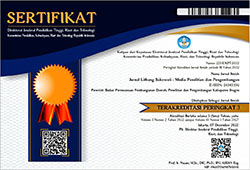PEMBANGUNAN DESA DAN TINGKAT KEMISKINAN KABUPATEN DI INDONESIA
DOI:
https://doi.org/10.32630/sukowati.v6i1.329Kata Kunci:
pembangunan desa, regresi linear berganda, tingkat kemiskinanAbstrak
Pengentasan kemiskinan di Indonesia menghadapi tantangan utama dengan tingginya angka kemiskinan di wilayah pedesaan. Terpusatnya perekonomian di daerah perkotaan telah menimbulkan jumlah kemiskinan pedesaan yang jauh lebih besar dibandingkan dengan perkotaan. Mengingat kenyataan bahwa kemiskinan di Indonesia identik dengan wilayah perdesaan, maka upaya menurunkan tingkat kemiskinan di wilayah pedesaan melalui pembangunan desa merupakan prioritas utama dalam menurunkan tingkat kemiskinan nasional. Penelitian ini bertujuan untuk menganalisis pengaruh pembangunan desa terhadap tingkat kemiskinan kabupaten di Indonesia. Variabel dependen yang digunakan dalam penelitian ini adalah tingkat kemiskinan kabupaten, sedangkan variabel independen utamanya adalah jumlah desa berkembang dan mandiri setiap kabupaten, yang merupakan pendekatan dari variabel pembangunan desa. Data yang digunakan dalam penelitian ini adalah data tahun 2014 dan 2018. Hasil analisis regresi linear berganda menunjukkan bahwa variabel pembangunan desa secara statistik signifikan menurunkan tingkat kemiskinan kabupaten. Hasil penelitian ini juga menunjukkan bahwa kekuatan korelasi antara variabel pembangunan desa dan tingkat kemiskinan kabupaten di bagian timur Indonesia lebih besar dibandingkan di bagian barat Indonesia. Pembangunan di wilayah pedesaan perlu dilakukan untuk mengurangi jumlah desa tertinggal menuju desa berkembang dan mandiri.
Unduhan
Diterbitkan
Cara Mengutip
Terbitan
Bagian
Lisensi
Hak Cipta (c) 2022 Riska Eka Agustina, Arya Yahya

Artikel ini berlisensi Creative Commons Attribution 4.0 International License.


















